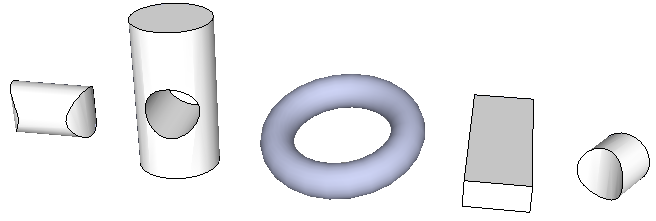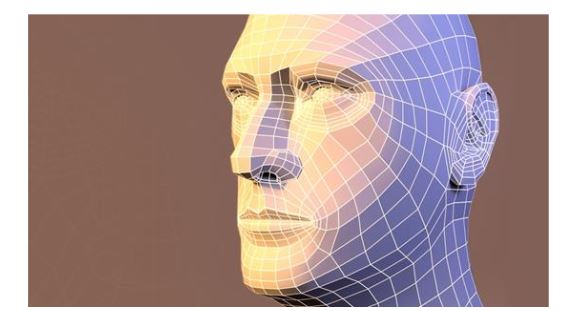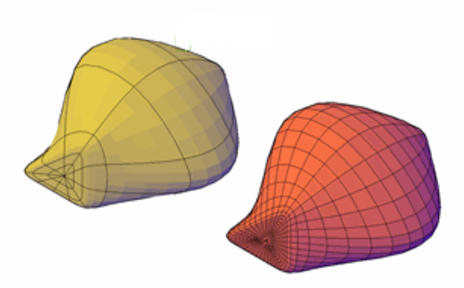2.3 Manual Static 3D Modeling
To give you an idea of modeling, let us first consider modeling by hand. In this case, a model of an object, whether existent or not in the past, present, or future is constructed by a human using software modeling tools manually. Creating 3D models manually can be done using software such as SketchUp (see Lesson 3), Maya, 3Ds Max, Blender and Cinema 4D, or any one of a number of software that exists for 3D modeling. There are two main techniques in manually creating 3D models: solid modeling and shell modeling. Solid modeling often uses CSG (constructive solid geometry) techniques. CAD packages such as Rhino, SolidWorks, and SketchUp are considered solid modeling platforms. Complex 3D models can be created with the use of solid geometries. The Figure below shows a couple of solid geometries that are used to create potentially very complex models. An example of a complete 3D model is shown below: a model of the historic Old Main created as part of Geography 497 in Spring 2016.

Shell modeling only represents the surface of an object. These types of models are easier to visualize and work with. An example of shell modeling is the use of polygon meshes consisting of a collection of triangles or any other type of convex polygon (from other geography lessons on interpolation you might be familiar with triangulation). Polygon meshes only represent the exterior of a model. To make the model smoother and more realistic, a method called tessellation can be used to break down the polygon meshes to higher resolution poly meshes. Programs such as Maya, 3D Studio Max, and Blender all utilize different methods of working with polygonal meshes.
While there is a distinct difference between CSG and shell modeling, many of the programs mentioned and even those that were not, provide support for both types in a limited capacity. Understanding what type of modeling best fits your project needs helps with choosing the best software for 3D modeling tasks.


